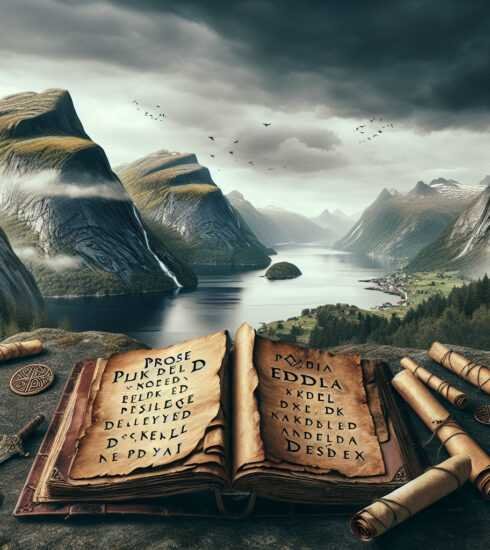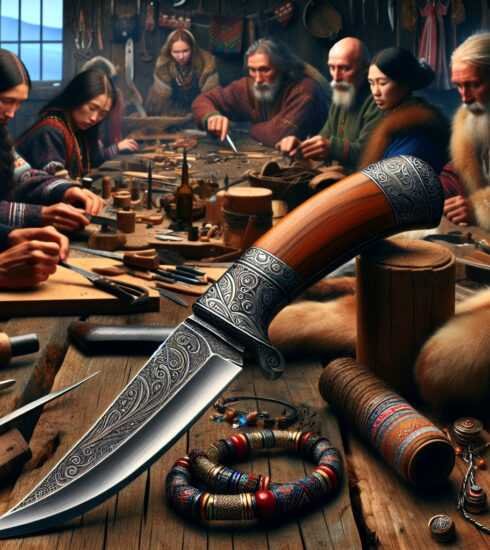Rediscovering Norways Rich Cultural Heritage: A Captivating Article on Nordic Nostalgia
Nordic Nostalgia: Reviving Norway’s Breathtaking Cultural Heritage
Norway, with its stunning landscapes and rich cultural heritage, has always been a source of fascination for people around the world. The country’s commitment to preserving its Nordic heritage is truly commendable. From its Viking roots and folklore traditions to its modern-day celebrations of Sami culture, Norway offers a diverse and awe-inspiring array of cultural experiences. In this article, we will delve into the depths of Norway’s cultural heritage to understand how it is being revived and appreciated in the modern era.
The Viking Legacy: From Warriors to Innovators
The Viking era, which spanned roughly from the late 8th century to the mid-11th century, holds a special place in Norway’s cultural heritage. The Vikings, known for their seafaring prowess and warrior spirit, left an indelible mark on the country’s history. Today, Norway proudly showcases its Viking heritage through museums, archaeological sites, and cultural events.
One of the most iconic symbols of Viking culture is the Viking ship. These magnificent vessels, with their intricate carvings and impressive size, were used for exploration, trade, and even warfare. The best-preserved Viking ship, known as the Oseberg ship, was unearthed in Norway in the early 20th century. It is now displayed at the Viking Ship Museum in Oslo, where visitors can marvel at its craftsmanship and learn about the Vikings’ maritime exploits.
Another significant aspect of Norway’s Viking heritage is its rich Norse mythology. The Norse gods, such as Odin, Thor, and Freya, play a central role in Norse mythology and are often depicted in ancient Norse artwork. Today, Norse mythology continues to captivate people worldwide, inspiring books, movies, and even video games.
Want to dive deeper into Norwegian folklore? Check out this article on Norwegian folklore!
Ancient Sami Culture: A Window into Norway’s Indigenous Heritage
No discussion of Norway’s cultural heritage would be complete without highlighting the Sami people, the country’s indigenous population. The Sami have inhabited the northern regions of Norway, Sweden, Finland, and Russia for thousands of years, and their unique culture and traditions continue to thrive today.
The Sami are known for their distinct language, music, and traditional clothing. Traditional Sami music, characterized by its joiking (a type of traditional Sami singing), often reflects the beauty of the natural world and the close connection between the Sami people and their environment.
In recent years, there has been a growing recognition and appreciation of Sami culture in Norway. The annual Sami National Day, celebrated on February 6th, showcases Sami traditions and highlights the importance of preserving their cultural heritage. Visitors to Norway can experience Sami culture firsthand by attending Sami festivals, visiting Sami museums, or even participating in reindeer sledding, a traditional Sami activity.
Curious to learn more about Sami culture? Visit our article on Sami culture!
Preserving and Celebrating Norwegian Folklore

Norway’s folklore traditions, including folk music, dance, and storytelling, are an essential part of the country’s cultural heritage. These traditions have been passed down through generations, serving as a means of cultural expression and preserving the history and values of the Norwegian people.
One of the most famous Norwegian folk traditions is the Hardanger fiddle. With its distinctive design and rich, vibrant sound, the Hardanger fiddle is often played during traditional Norwegian celebrations and festivals. The instrument is intricately decorated with ornate wood carvings and is a testament to the craftsmanship and artistry of Norwegian folk musicians.
Traditional Norwegian dances, such as the halling and the springar, showcase the energy and skill of Norwegian dancers. These dances, often accompanied by lively folk music, are performed at various folk festivals and cultural events throughout the year.
Storytelling has long been an important part of Norwegian folklore. Many traditional Norwegian stories and fairy tales, such as those collected by Peter Christen Asbjørnsen and Jørgen Moe, continue to captivate audiences of all ages. These tales feature mythical creatures, heroes, and moral lessons, providing a glimpse into the culture and values of the Norwegian people.
Today, there is a renewed interest in preserving and celebrating Norwegian folklore. Folk music festivals, storytelling events, and folk dance workshops allow both locals and visitors to experience the beauty and richness of Norwegian folk traditions.
Promoting Cultural Tourism: Exploring Norway’s Heritage Sites
Norway’s commitment to preserving its cultural heritage extends to its efforts in promoting cultural tourism. The country has identified several heritage sites that offer a deeper understanding of its history and traditions.
One such site is Bryggen, the old wharf of Bergen. This UNESCO World Heritage site dates back to the Hanseatic period and provides fascinating insights into Norway’s trading history. The colorful wooden buildings that line the wharf showcase the unique architectural style of the time.
The historic mining town of Røros is another must-visit destination for those interested in Norway’s cultural heritage. This well-preserved town, also a UNESCO World Heritage site, offers a glimpse into the mining industry that played a vital role in Norway’s history. Visitors can explore the old copper mines, visit traditional craft workshops, and immerse themselves in the charming atmosphere of this historic town.
Looking for more information on Norwegian heritage sites? Check out the Wikipedia page on World Heritage Sites in Norway!
Conclusion
Norway’s cultural heritage is a treasure trove of captivating stories, breathtaking artistry, and profound traditions. From the Viking warriors to the Sami people, the country’s rich past continues to shape its present and future. Through its commitment to preserving and reviving its Nordic heritage, Norway invites visitors from around the world to experience the beauty and depth of its cultural traditions. Whether it is exploring Viking ruins, attending a Sami festival, or participating in a traditional dance, Norway promises a journey of discovery and appreciation of its extraordinary cultural heritage.






